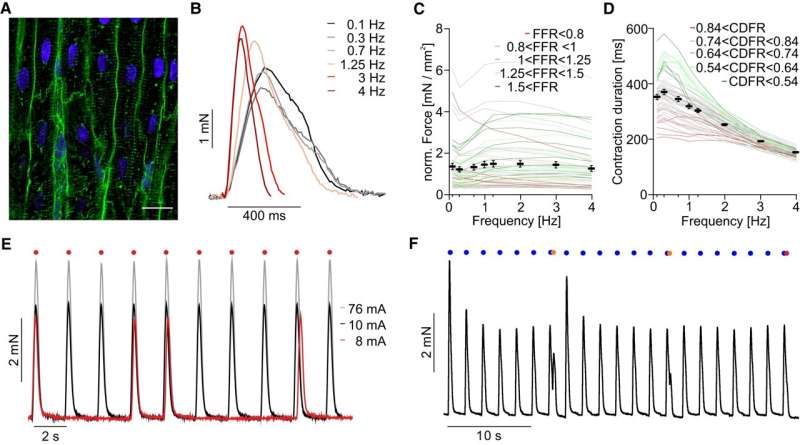This article has been reviewed according to Science X's editorial process and policies. Editors have highlighted the following attributes while ensuring the content's credibility:
fact-checked
peer-reviewed publication
proofread
Detecting side effects of new drugs on the heart more efficiently

Scientists at the University Medical Center and the University of Göttingen have developed a novel method to predict the side effects of new drugs and therapeutic approaches on the heart more efficiently. The advantage: this method is already effective in a very early test phase, even before preclinical screening in the living organism. The results are published in Cardiovascular Research.
Newly developed drugs and therapeutic approaches often have side effects on the heart. Comprehensive preclinical testing of new drug candidates therefore precedes clinical trials and application, with the aim of ruling out potential side effects as far as possible in advance. However, current procedures usually only cover part of the possible side effects on the heart. Improving the test procedures is therefore essential in order to predict the risk of undesirable side effects with a high degree of specificity and sensitivity.
The team was led by Prof. Dr. Tobias Brügmann, research group leader at the Institute of Cardiovascular Physiology at the University Medical Center Göttingen (UMG), in cooperation with Prof. Dr. Tim Salditt, Director of the Institute of X-ray Physics at the University of Göttingen, both members of the Cluster of Excellence "Multiscale Bioimaging: From Molecular Machines to Networks of Excitable Cells" (MBExC).
The researchers have now developed a way to keep fresh slices of intact heart tissue in culture for several days while demonstrably preserving vitality and functionality. This enables more efficient screening and detection of the effects of new drugs on the electrical and contractile properties of heart muscle cells and on the general tissue architecture before the active substances are used for analyses in living organisms.
About the method
The scientists first prepare thin (300 µm) tissue slices from pig hearts. Pig hearts are very similar to human hearts, from which there are hardly any opportunities to obtain samples for drug studies. Using a newly developed approach of cultivation, the scientists succeeded for the first time in keeping the tissue slices, which consist of intact heart muscle tissue, for up to two weeks in an incubator.
As the scientists demonstrated, not only is the typical shape of the heart muscle cells preserved over the entire period, but also their vitality and functionality. This is an absolute prerequisite in order to comprehensively analyze the effects of various substances, such as potential new drugs or therapeutic approaches.
The general suitability of the test procedure was first tested with drugs with known and well-described effects on the heart. The scientists then tested whether they could reliably identify those substances with side effects on the heart among several, which was successful in every respect.
"Identifying undesirable side effects on the heart as early and efficiently as possible is crucial to lower the health risk for patients in clinical trials later on. Moreover, this will also help to reduce the costs of drug development," explains Prof. Dr. Brügmann. "We are now in a position to test potential new drugs and new therapeutic approaches much more comprehensively in advance concerning their suitability for later use in clinical trials."
More information: Runzhu Shi et al, Contractility measurements for cardiotoxicity screening with ventricular myocardial slices of pigs, Cardiovascular Research (2023). DOI: 10.1093/cvr/cvad141




















